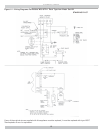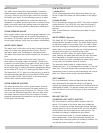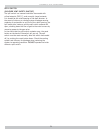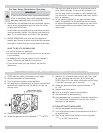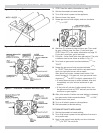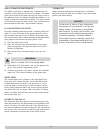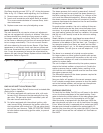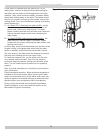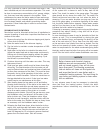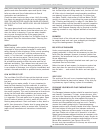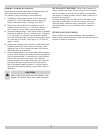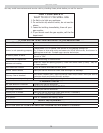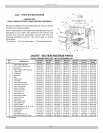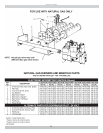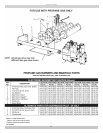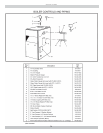
27
It is very important to clean a new steam boiler after it has
been installed and put into continuous operation. This must
be done to remove any accumulation of oil, grease, sludge,
etc., that may have been present in the system. These
substances may cause the boiler water to foam and surge,
thus producing a very unsteady water line, throwing water
into the steam header, and possibly preventing steam
generation. Follow these steps in order to remove these
contaminants.
SKIMMING AND SLOWDOWN
New boilers must be skimmed at the time of installation to
remove threading oil and other impurities that fl oat on the
surface of the water.
Remove the plug from the skimmer tapping and pipe to
1.
a fl oor drain or bucket.
Raise the water level to the skimmer tapping.
2.
Fire the boiler to maintain a water temperature of 180-
3.
200 degrees.
Feed water to the boiler to maintain the water level.
4.
Adjust the water feed rate to keep water continuously
fl owing out of the skimmer tapping without the water
level going above or falling below the tapping. Cycle
the burners to prevent boiling.
Continue skimming until the water runs clear. This may
5.
take several hours.
Float type low water cutoffs must be blown down after
6.
skimming. The fl oat chamber of the low water cut off
must be fl ushed clean and maintained clear of sediment
to allow free movement of the fl oat. This must be done
frequently during initial operation of the boiler, and at
least once a week thereafter. Follow the instructions on
the tag attached to the control. Probe type low water
cutoffs require no maintenance at this time.
After blowing down the low water cut off and before
7.
blowing down the boiler, fi ll the boiler to the water line.
Fire the burners and allow normal steam pressure to
build up. Run a connection from the boiler blowdown
valve to a nearby sewer or fl oor drain or to a safe
discharge point outside. Shut off the gas burners, open
the blowdown valve, and allow all of the water in the
boiler to drain out. Close the blowdown valve. Allow
the boiler to cool thoroughly, and then slowly refi ll the
boiler to the water line. Repeat this step as many times
as necessary until the blowdown water is clear.
Following the fi nal blow down, allow the boiler to thor-
8.
oughly cool, and then add fresh water slowly up to the
normal water line. Start the burners and maintain at
least 180 degrees for 15 minutes to remove dissolved
gasses from the fresh water. Shut off burners
CLEANING YOUR BOILER
Now, let the boiler steam for a few days, to give the majority
of the system dirt a chance to work its way back to the
boiler. Then check the water in the gauge glass. The gauge
glass should be dry above the water line. The water line
should not bounce more than one inch when the boiler is
steaming. If you see water droplets carrying over from the
top of the gauge glass, or excessive bouncing of the water
line, the boiler needs further cleaning. Take a water sample
and boil it on the stove, to see if it foams. If it does, this also
indicates the boiler needs to be cleaned.
If cleaning is necessary, repeat the skimming and blow down
procedure from above. Usually, a long skim will be all you
need to clean the boiler.
In more troublesome cases it may be desirable to fl ush the
system as well. This is accomplished by closing the gate
valve in the Hartford Loop, and opening the drain(s) at the
end of the wet return(s). Run a hose from the drain valve
on the wet return to a nearby fl oor drain or bucket. Run the
boiler at two pounds of steam pressure. Feed just enough
water to compensate for the waste condensate going down
the drain, and to keep the boiler from going off on low water
cut off. Run the boiler until all waste condensate runs clear.
NOTICE
Boiler cleaners and chemical cleaning
additives are not recommended. If used
and not rinsed properly, they will do more
harm than good. The cleaning procedures
laid out above will clean out the typical oils
and impurities found in new boilers and in
residential heating systems. The best thing for
your boiler and heating system is clean water
with no additives.
In very extreme cases it may be necessary to chemically
clean and fl ush the heating system. Consult the boiler
manufacturer before introducing any chemicals into the
boiler.



